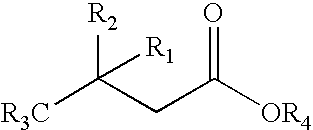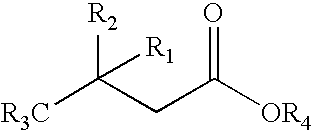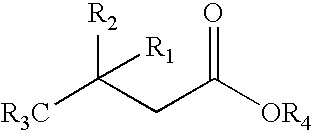Corrosion inhibitor or intensifier for use in acidizing treatment fluids
a technology of acidizing treatment fluid and corrosion inhibitor, which is applied in the direction of sealing/packing, chemistry apparatus and processes, and well tubular and casing equipment, etc., can solve the problems of increased corrosion of equipment, increased equipment corrosion, and high cost of corroded equipment repair or replacemen
- Summary
- Abstract
- Description
- Claims
- Application Information
AI Technical Summary
Problems solved by technology
Method used
Image
Examples
example 1
[0050] To test the activity of the corrosion inhibitors of the present invention, corrosion test coupons of 13Cr, 22Cr or N-80 carbon steel were used. A weighed coupon of the metal was suspended from a Teflon® holder inside a glass cell to which was added 100 mL of acid solution with either no inhibitor, traditional corrosion inhibitors (such as Halliburton's MSA-III, HAI-404, HII-124B, and / or HII-500M), and / or the above-described 3-hydroxypropionic acid (“3-HP”) as a corrosion inhibitor or inhibitor intensifier. The acids tested were acetic acid (10% w / v solution) and hydrochloric acid (15% w / v solution). In addition, 3-HP (15.75% w / v solution) was tested as the acid solution without any other corrosion inhibitor. The glass cell was then placed in an autoclave. The autoclave was pressurized to 1000 pounds per square inch gauge (“psig”) using nitrogen and heated to the desired temperature for the desired total contact time. In the composition, 3-HP was tested by using 0.5% v / v of a ...
PUM
| Property | Measurement | Unit |
|---|---|---|
| temperatures | aaaaa | aaaaa |
| temperatures | aaaaa | aaaaa |
| temperatures | aaaaa | aaaaa |
Abstract
Description
Claims
Application Information
 Login to View More
Login to View More - R&D
- Intellectual Property
- Life Sciences
- Materials
- Tech Scout
- Unparalleled Data Quality
- Higher Quality Content
- 60% Fewer Hallucinations
Browse by: Latest US Patents, China's latest patents, Technical Efficacy Thesaurus, Application Domain, Technology Topic, Popular Technical Reports.
© 2025 PatSnap. All rights reserved.Legal|Privacy policy|Modern Slavery Act Transparency Statement|Sitemap|About US| Contact US: help@patsnap.com



